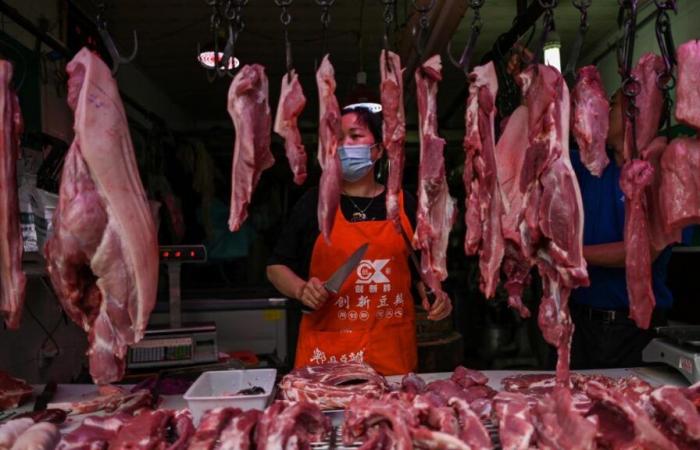Nearly five years after its emergence, the international scientific community has still not managed to determine with certainty the origin of Covid-19.
Although the first cases were initially detected in Wuhan at the end of 2019, two theories are currently being considered: a leak from a laboratory in the city where similar viruses were being studied, or an intermediary animal that infected people who frequented a local market. The scientific community favours this last theory.
The study is based on the analysis of more than 800 samples collected in this market where different species of wild animals were sold. Collected in January 2020, after the market closed, they were taken from surfaces, from various stalls in the market, including those selling wild animals, and from sewers.
With this type of data, made available to researchers by Chinese scientists, “It is not possible to say with certainty whether the animals present on the market were infected or not”warns Florence Débarre, researcher at the CNRS and co-author of the study.
But, “Our study confirms that there were wild animals in this market at the end of 2019, including species such as raccoon dogs and civets. And that these animals were present in the southwest corner of the market, which also happens to be an area in which many Sars-CoV-2 viruses, responsible for Covid-19, have been detected.”she explains. As part of the study, “animal carts, a cage, a garbage cart and a hair and feather removal machine from a wildlife stand” tested positive for Sars-CoV-2 and there were in these samples “more DNA from wild mammal species than human”.
Wildlife DNA was found in positive samples from this stand, including species such as civet cats, bamboo rats and raccoon dogs.
“Very strong evidence”
“These data indicate that either the animals present at this stall shed the Sars-CoV-2 detected on the animal equipment, or that unreported early human cases of Covid-19 shed the virus in the exact same location as the detected animals.”explain the authors of the study.
This new study “provides very strong evidence that wildlife stalls in the market were a hotbed of the Covid-19 pandemic”says James Wood, an epidemiologist at the University of Cambridge.
“This work is important”he believes, because despite the efforts “Globally, little or nothing has been done to strengthen laboratory biosafety to limit trade in live wildlife, biodiversity loss or land use changes, which are the real likely drivers of past and future pandemic outbreaks.”.






